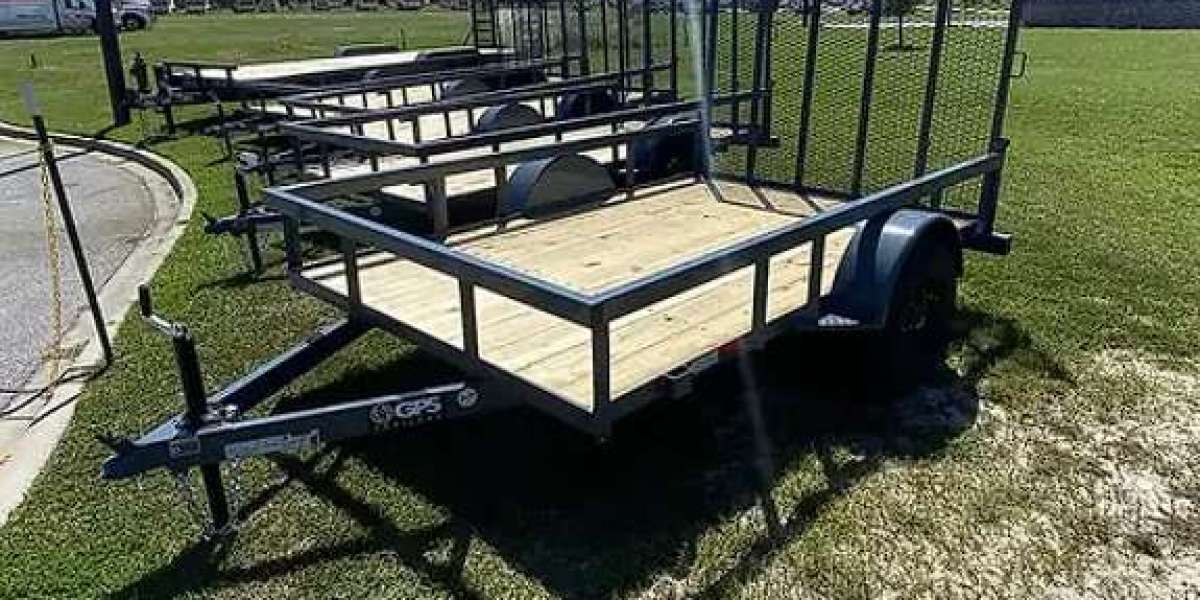Whether you're hauling skid steers, compact tractors, or pallets of building materials, choosing the right heavy-duty open utility trailer can make or break your operations. These trailers are the backbone of construction logistics, enabling contractors, farmers, and industrial teams to move equipment efficiently, safely, and legally. But with so many options on the market—deckover, low-profile, tandem axle, gooseneck—it’s easy to get overwhelmed.
This guide breaks down the essential features, configurations, and compliance factors to consider before investing in a trailer that fits your hauling needs and business goals.
? Understanding Trailer Types: Deckover vs. Low-Profile
When it comes to construction-grade trailers, the first decision is often between deckover and low-profile designs:
Deckover Trailers These have the deck positioned above the wheels, offering a wider platform and better clearance. They're ideal for hauling large equipment or wide loads like lumber stacks, scaffolding, or prefabricated panels. However, the higher deck height can make loading heavier machinery more challenging without ramps or lifts.
Low-Profile Trailers These sit lower to the ground, with the deck between the wheels. They’re better suited for loading heavy equipment like skid steers, mini excavators, or forklifts. The lower center of gravity improves stability during transport, especially on uneven terrain or winding roads.
Both types of trailers serve distinct purposes, and your choice should depend on the type of cargo you haul most frequently.
⚙️ Axle Configuration and Payload Capacity
Heavy-duty trailers typically come in tandem axle or triple axle configurations. Here’s what to consider:
Tandem Axle Trailers These offer better weight distribution, smoother towing, and increased payload capacity compared to single axle models. Most construction trailers fall into this category, supporting loads between 7,000 to 14,000 lbs.
Triple Axle Trailers Designed for extreme loads, these are used for transporting large machinery or multiple pieces of equipment. They provide added stability and braking power but require a more powerful tow vehicle and may be subject to stricter DOT regulations.
Always check the Gross Vehicle Weight Rating (GVWR) and ensure your trailer’s capacity matches your heaviest expected load. Overloading not only risks fines—it compromises safety and equipment lifespan.
?️ Essential Features for Construction Use
To maximize efficiency and safety on job sites, look for these must-have features:
Heavy-Duty Ramps Fold-down or slide-in ramps are essential for loading wheeled equipment. Look for reinforced steel construction and anti-slip surfaces.
Tie-Down Systems D-rings, stake pockets, and rub rails allow secure strapping of machinery and materials. Some trailers offer integrated winches for easier loading.
Braking Systems Electric brakes are standard on most heavy-duty models. For larger loads, consider trailers with hydraulic surge brakes or breakaway kits to meet DOT safety standards.
Lighting and Reflectors LED lighting improves visibility and durability. Ensure your trailer meets federal and state lighting requirements, especially if used at night or in low-visibility conditions.
Tool Storage and Tongue Boxes Built-in storage helps keep chains, straps, and tools organized and accessible. Lockable tongue boxes add security and weather protection.
? Sizing and Dimensions
Choosing the right trailer size depends on your equipment footprint and hauling frequency. Common dimensions include:
| Trailer Size | Typical Use Case | GVWR Range |
|---|---|---|
| 14' x 7' | Compact tractors, mowers | 7,000–10,000 lbs |
| 16' x 8.5' | Skid steers, pallets | 10,000–14,000 lbs |
| 20' x 8.5' | Excavators, multiple machines | 14,000–21,000 lbs |
If you frequently haul oversized loads, consider a gooseneck trailer for added stability and turning radius. These connect to a ball hitch in the truck bed, distributing weight more evenly and allowing for tighter maneuvering.
? DOT Compliance and Legal Considerations
Construction trailers are subject to Department of Transportation (DOT) regulations, especially when crossing state lines or operating commercially. Key compliance areas include:
Brakes and Breakaway Systems Required for trailers over 3,000 lbs in most states. Breakaway kits automatically engage brakes if the trailer detaches.
Lighting and Reflectors Must meet FMVSS 108 standards, including side markers, tail lights, and turn signals.
Registration and Licensing Commercial trailers often require separate registration, inspection, and insurance. Check local laws for weight limits and permit requirements.
Load Securement DOT mandates specific tie-down procedures for equipment over 10,000 lbs. Using rated chains and binders is essential.
Failure to comply can result in fines, impoundment, or liability in case of accidents—so it pays to stay informed.
? Pro Tips Before You Buy
Inspect Welds and Frame Quality Look for full-seam welds, reinforced cross-members, and corrosion-resistant coatings.
Check Tire Ratings and Suspension Heavy-duty trailers should have radial tires rated for highway speeds and multi-leaf spring suspension for shock absorption.
Ask About Warranty and Service Reputable manufacturers offer 1–3 year warranties and nationwide service networks. Don’t overlook post-sale support.
Consider Resale Value Aluminum trailers may cost more upfront but retain value better over time. Branded trailers with DOT compliance are easier to resell.
? Final Thoughts
Investing in a heavy-duty open utility trailer is more than a purchase—it’s a strategic decision that affects your workflow, safety, and bottom line. By understanding the differences between deckover and low-profile designs, axle configurations, and compliance requirements, you’ll be better equipped to choose a trailer that supports your business for years to come.








